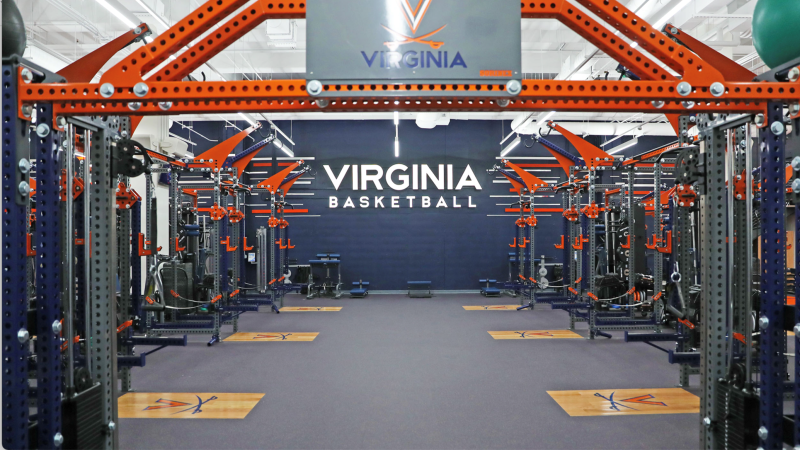Data, AI Changing the Landscape of Sports, Experts Say

From optimizing performance to reducing injury risks, data and artificial intelligence are increasingly shaping the way teams prepare and operate. What does this mean for athletes, and what are the issues – and concerns – that will arise as the data revolution expands its reach in competitive athletics?
These were among the topics discussed in the latest edition of the Co-Opting AI series hosted by New York University’s Institute for Public Knowledge, the University of Virginia’s Karsh Institute of Democracy, and Sloane Lab.
The goal of the event, said Mona Sloane, an assistant professor of data science and media studies at UVA who led the discussion, “is to look under the hood of athletics and AI” and to gain a better understanding of “how data-driven technologies and AI intersect with different aspects” of sports.
One element of this intersection that the panel addressed was the practice of tracking key health metrics of athletes through wearable devices and other means.
Natalie Kupperman, an assistant professor of data science, discussed her work with the UVA men’s basketball team and the tools she and the training staff use, such as mechanisms that are embedded in gymnasium floors that can capture whether players are experiencing neuromuscular fatigue. The data that is gathered allows her and the basketball staff to update training plans in real time.
“What I think about every day as I do this work is using data plus context to optimize athlete health, wellness, and readiness,” Kupperman said.
Data privacy and ensuring data is not used to the detriment of athletes is another critical concern, she added.
“As we work with UVA athletics more, I hope that we can be one of the first schools to really put out guidelines on how we’re using athlete data and how we’re ensuring the privacy of athletes when we collect this,” Kupperman said.
Hannah Borenstein, an anthropologist at the University of Chicago, has worked extensively with women long-distance runners in Ethiopia. She discussed the challenges they face, such as with acquiring high-performing shoes, and the cultural and economic factors that can shape their careers and experiences.
She also recounted how data from Ethiopian athletes is being gathered and transferred to U.S. labs. “When you talk to the athletes,” she said, “they actually don’t really know what’s happening with a lot of their data.”
George Atallah, who works as the assistant executive director of external affairs for the NFL Players Association, noted some of the issues that he thinks about from a labor perspective when it comes to data and professional football players.
“What if teams were able to predict that a player was going to play only two years based off of their health information that they gathered?” he asked, noting that challenges such as this are “related to the livelihood, literally, in the job functions of our membership.”
Atallah also addressed how AI, as it is continually refined, could change the nature of being a sports fan, explaining that the essence of watching live sports is that “it elicits an emotional response.”
“What if AI made the unpredictable predictable?” he asked. “How would that change the value of our emotional connection with sports and the actual tangible value of sports?”
As for how all of this is affecting athletes, the panel also featured Rebecca Jarrett, a former UVA women’s soccer team captain who now works at a New York-based global public relations and communications services firm. In addition to helping guide the discussion, Jarrett shared some personal reflections on how data and technology affected her career after twice tearing her ACL.
“I had two pretty major injuries and two major surgeries and part of my recovery process was heavily aided by a lot of the data that was collected on me the years prior,” she noted. That said, when asked whether the extensive data collection was “fun” for athletes, she said, “my short answer is no, there is no fun measurement, unfortunately.”



